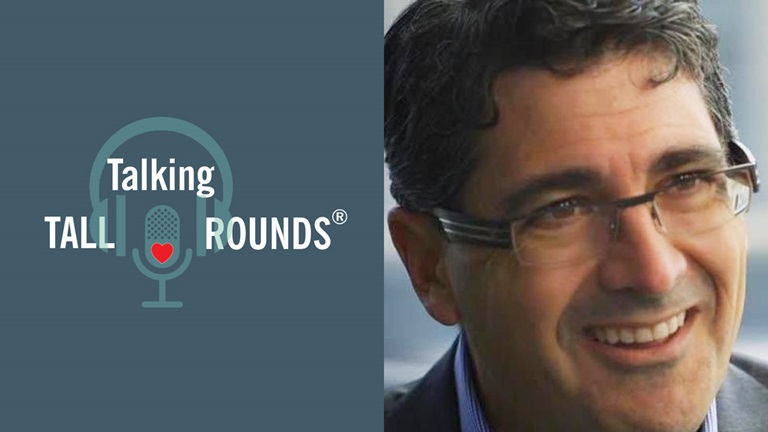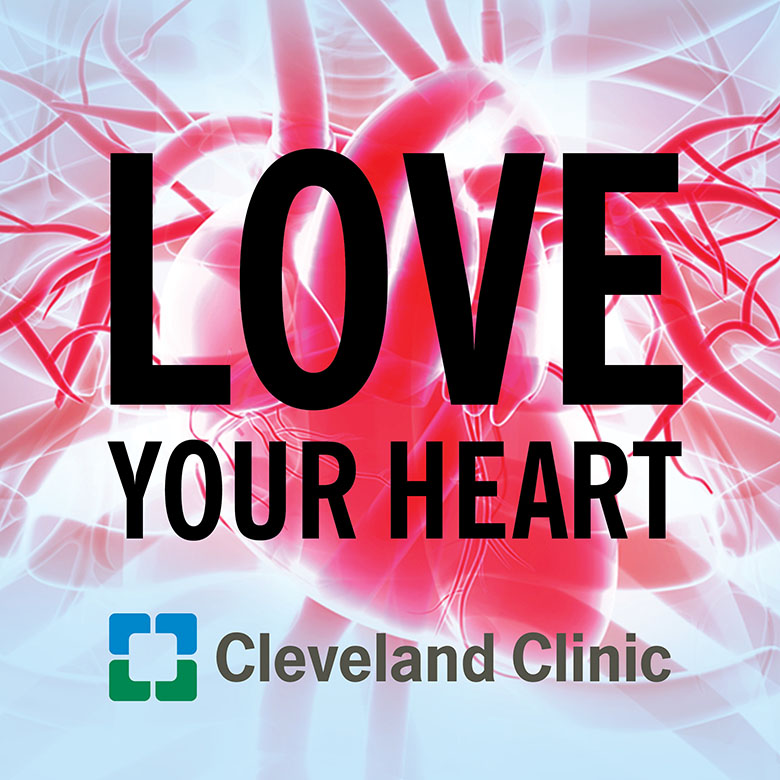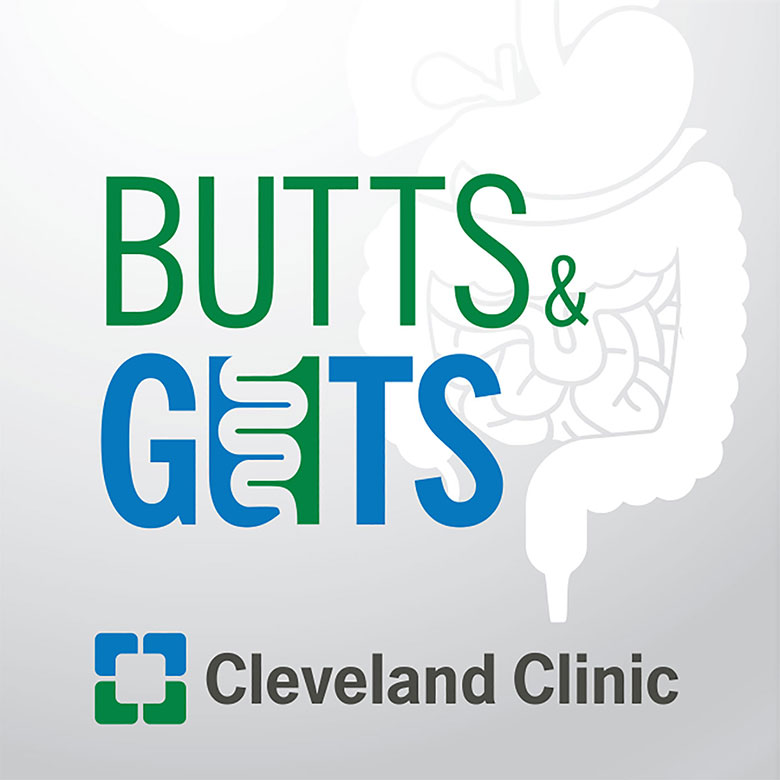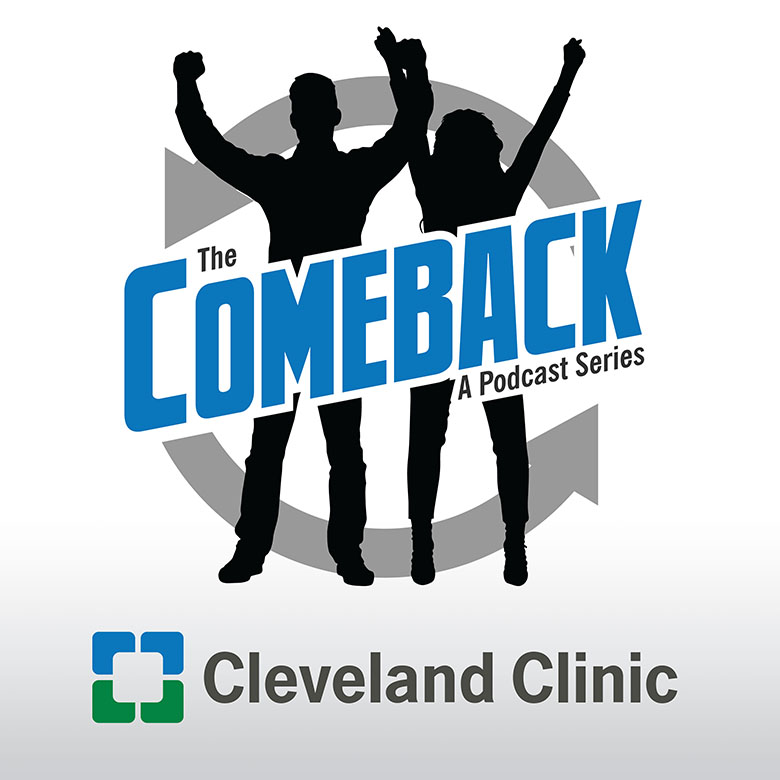Aorta Disease: Aneurysm and Dissection

Host: Steven Nissen, MD, Chairman of the Robert and Suzanne Tomsich Department of Cardiovascular Medicine
Dr. Steven Nissen talks to cardiologist Dr. Sagar Kalahasti, Director of the Cardiovascular Marfan & Connective Tissue Clinic and surgeon Dr. Eric Roselli, Director of the Aorta Center about aorta disease: follow-up, typed of testing, when to have surgery and what patients should know about life-long care.Subscribe: Apple Podcasts | Podcast Addict | Buzzsprout | Spotify
Aorta Disease: Aneurysm and Dissection
Podcast Transcript
Speaker 1: Welcome to Love Your Heart, brought to you by Cleveland Clinic's Seidel and Arnold Miller Family Heart and Vascular Institute. These podcasts will help you learn more about your heart, thoracic, and vascular systems, ways to stay healthy, and information about diseases and treatment options. Enjoy.
Interviewer: We're going to talk with two outstanding experts about disease of the aorta, mainly aortic aneurysm. We're here with Dr. Sagar Kalahasti, who's in the Department of Cardiovascular Medicine, and Dr. Eric Roselli, who's a surgeon who has probably done as many operations on people with this disorder as anybody on the planet. So somebody finds out that they have an aneurysm in the aorta. What do they need to know? What advice would you give them?
Dr. Kalahasti: I would advise that they should be seen by a specialist that has interest in aortic disease so they can be educated about the disease, what are the implications of the diagnosis, that surveillance techniques and what kind of imaging tests they need, the pros and cons of those testing. I think that probably would be the first thing that I would do for most of the patients, and also talk about when and if they need surgery, to go to a specialized center with excellent outcomes.
Interviewer: It's not a ticking time bomb.
Dr. Kalahasti: That is correct.
Interviewer: It's very scary for patients to be told they have an aneurysm in the aorta. You go read up on this, and they say, "Oh my goodness, is this thing going to burst?"
Dr. Kalahasti: Burst, yes.
Dr. Roselli: Right. What I want them to know is if they found it incidentally, they should be really fortunate about having the diagnosis because, most likely, we're way ahead of the curve and we can put a plan in place to take care of it at the right time to keep them around for a good long time, and it won't necessarily interrupt the quality of their life except for the few weeks after I operate on them.
Interviewer: So what should people know about what kind of follow up, how often should they be seen? What advice would you give people?
Dr. Kalahasti: I think after the initial diagnosis, depending on the size that they were diagnosed first, we can make a plan about their follow up. We usually have an initial follow up in six months, just to see what the rate of growth is, and depending on that we can make a plan as to-
Interviewer: How do you measure the rate of growth? People, I'm sure, want to know.
Dr. Kalahasti: Yeah. Most of the time, it's imaging tests, which includes either an echo cardiogram or CAT scan, or an MRI. That's what we use primarily for a follow up of aortic disease. That's what you use to follow up on-
Interviewer: Some people may be concerned about radiation with a CT scan. What can you tell people about safety?
Dr. Kalahasti: With the latest generation, fast CT scanners, the radiation dose has substantially, I mean substantially, come down and the cost of doing that to prevent a catastrophic or a life threatening event as an aortic dissection I think is worth the cost.
Dr. Roselli: If I could interrupt though, because I see lots of patients that are referred to me, and they've had scans done in other places, sometimes too many and they get readings about numbers that are all over the place. The first thing you said, Sagar, is that they have to see someone who specializes and has a particular interest in aortic disease. I bring it up because I want to make sure, I don't take it for granted that you're a cardiac aortic imaging specialist that helps us see patients with me.
Dr. Kalahasti: Yeah.
Dr. Roselli: I know that when we're seeing together, and they've seen you first, and you've coordinated the imaging, that's the right kind of imaging, make sure that the images are gathered the right way. They're processed in such a way that we can have a very accurate, sizing and plan for that aorta. Plus, you've also taken safety into account so you're limiting the amount of radiation that they get in full.
Dr. Kalahasti: Absolutely.
Dr. Roselli: A CAT scan is not a CAT scan is not a CAT scan. So it's important to get that imaging done at a place that really understand why and how they're doing it, and they tailor it to it. I tell my patients you guys take as much interest in how you image the aorta as I do cutting it out and replacing it.
Dr. Kalahasti: Yeah.
Interviewer: Now cutting it out and replacing it sounds pretty scary to patients. What should people expect if they're going to need to have surgery?
Dr. Roselli: We tailor it to the disease and to the patient. The technology has advanced quite a bit, where depending on the segment of the aorta and the reason for the aneurysm, more often than not we can offer a less invasive kind of operation. Sometimes it's least invasive, like a stent that we deliver through a puncture in the groin, and sometimes it's less invasive like a repair through the chest through a smaller incision. And sometimes less invasive means actually a big incision in the chest, but not two big incisions in the chest.
Dr. Kalahasti: Yeah.
Dr. Roselli: So aortic disease has to be sort of tailored, but what's most important to understand is that we can do it really safely, and especially a high volume center with a bunch of experts surrounding that patient. The risk of death and stroke and long-term survival from aortic aneurysm and dissection even is way better than it was even just a few years ago. We can give somebody a good long, productive life, even with this diagnosis, even when it's most severe sometimes.
Dr. Kalahasti: One of the other questions that patients most commonly ask is, "Can I do lifting weights?" Because if they think it's a ticking time bomb, would I lift weights? There's no black or white answer to that. There are no research trials saying, "If you lift 48 pounds you're not at risk, and if you do 52 pounds or 100 pounds, you're at higher risk." We have more a common sense approach to this, and depending on the initial size, we tailor the recommendations. In general, I think we agree that they should not lift anything that requires them to hold their breath or do a bounce over maneuver, or not lift anything greater than half their body weight. What do you think?
Dr. Roselli: Well, I like the half the body weight recommendation. What I don't want people to do is be afraid to live their lives and be active and exercise.
Dr. Kalahasti: Yeah, right.
Dr. Roselli: So you need to exercise and stay healthy. If we're that worried about the aorta, that it's so fragile that doing something is going ... I'll fix it. Most of the aortas that we're monitoring, that have some dilatation or a smaller aneurysm, most folks can live a pretty active life. We certainly don't want them doing power lifting or really extreme things.
Dr. Kalahasti: Sure.
Dr. Roselli: But for now, we don't have really clear cut, objective descriptions for that, but we have a good understanding of when and how people can be active.
Interviewer: So really, the news for patients is really good new, that this can be followed, that surgery can be timed in a way to prevent the serious complications, and that really the outcomes from surgery when it's needed are really very, very good.
Dr. Kalahasti: Yes, absolutely.
Dr. Roselli: Agree.
Interviewer: Thank you both for explaining aortic disease to our listeners.
Dr. Kalahasti: Thank you very much for having us.
Dr. Roselli: Thanks.
Speaker 1: Thank you for listening. We hope you enjoyed the podcast. We welcome your comments and feedback. Please contact us at heart@ccf.org. Like what you heard? Please subscribe and share the link on iTunes.

Love Your Heart
A Cleveland Clinic podcast to help you learn more about heart and vascular disease and conditions affecting your chest. We explore prevention, diagnostic tests, medical and surgical treatments, new innovations and more.


